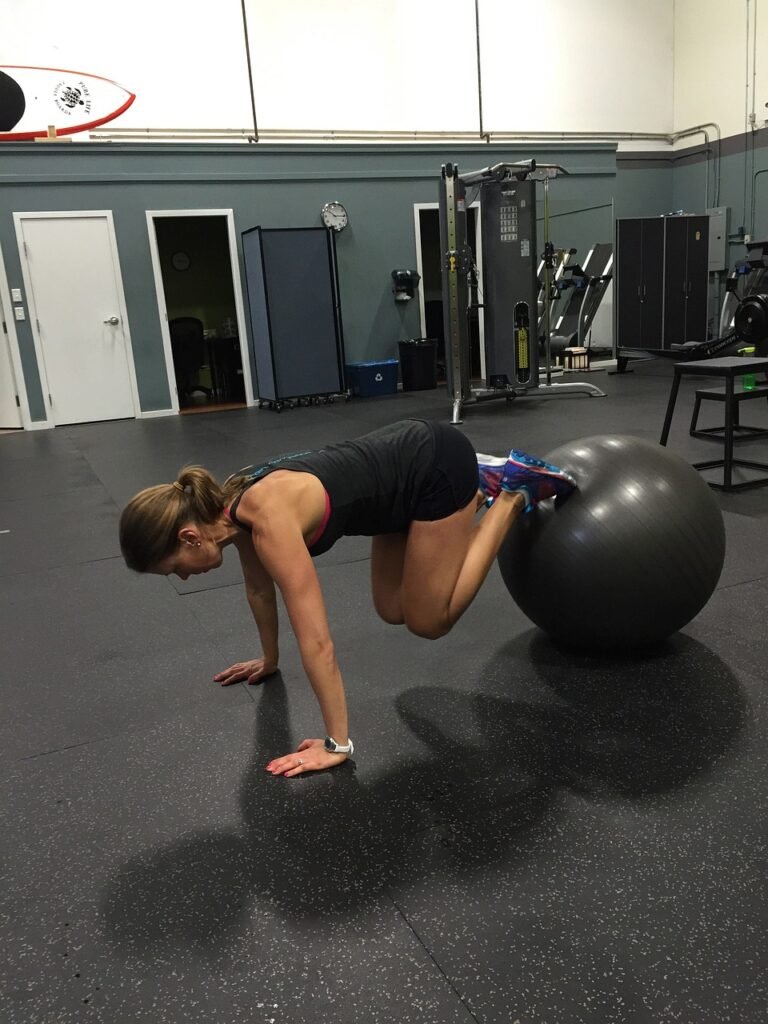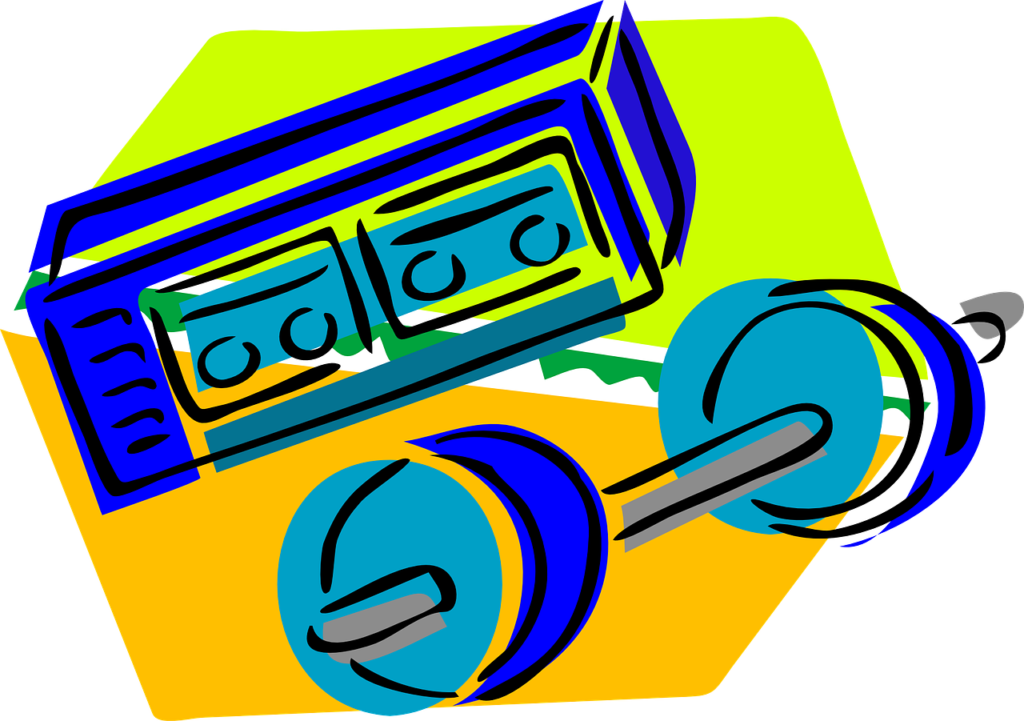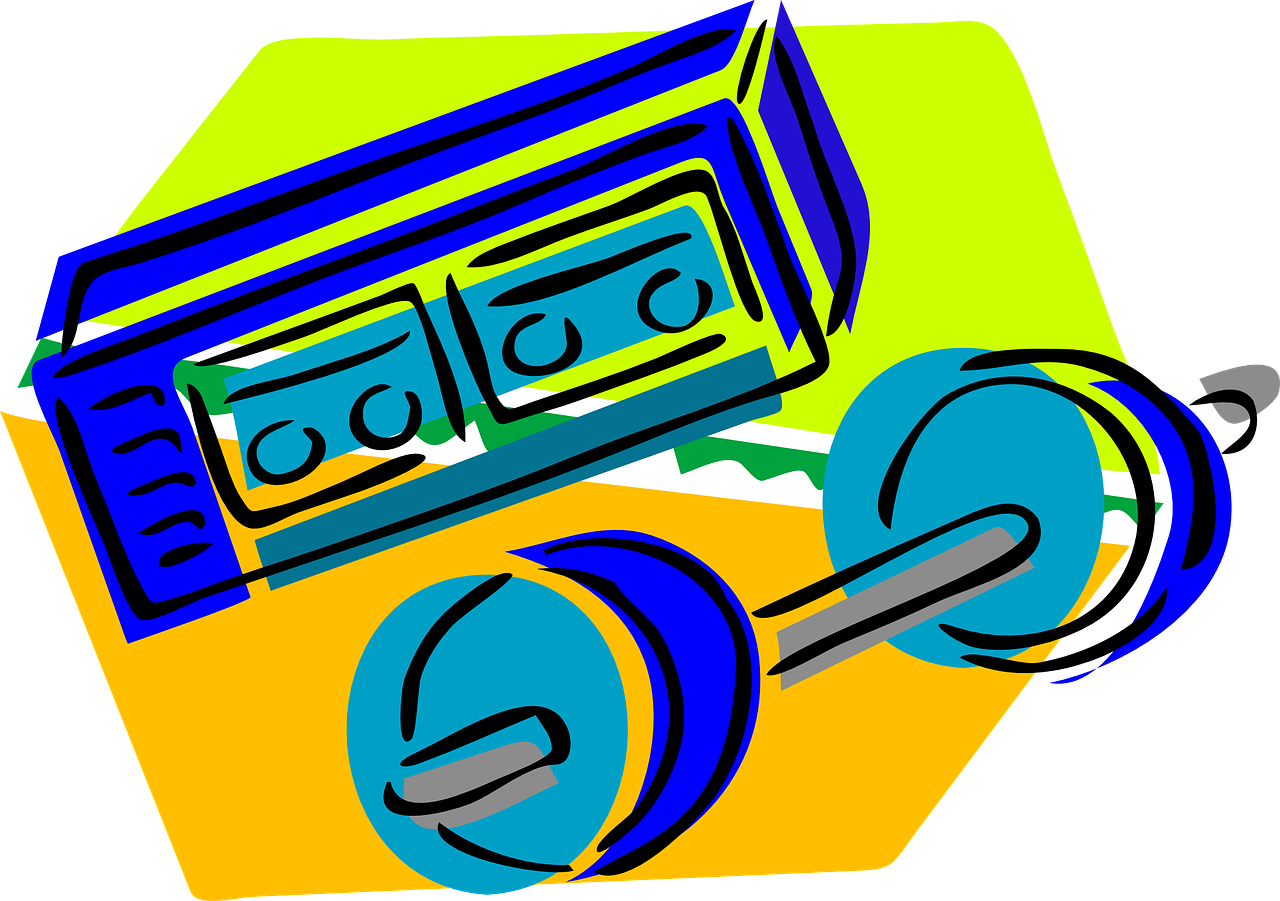In order to develop a strong and stable core, it is essential to incorporate targeted exercises that effectively engage the specific muscle groups involved. By focusing on exercises that directly work the core, such as planks, crunches, and Russian twists, you can build both strength and stability. These exercises, when combined with the right tools, can maximize your workout and yield optimal results. Whether you prefer using stability balls, resistance bands, or medicine balls, incorporating these tools into your routine can enhance your core strength training and take your fitness journey to the next level.
Benefits of Building Core Strength

Improves posture
Building core strength is essential for improving your posture. Your core muscles help support your spine and maintain proper alignment. By strengthening your core, you can prevent slouching and maintain a more upright posture throughout the day. Good posture not only looks more professional and confident, but it also prevents unnecessary strain on your back and neck.
Enhances stability and balance
A strong core provides a stable base for all your movements, improving your overall stability and balance. Whether you’re performing daily activities or engaging in sports and physical activities, having a stable core allows you to move with more control and precision. With enhanced stability and balance, you can avoid falls and injuries, especially in situations that require quick changes in direction or balance.
Reduces the risk of injuries
By building core strength, you can significantly reduce the risk of injuries. Your core muscles play a crucial role in stabilizing your body, especially during movements that involve twisting, bending, and sudden changes in direction. A strong core helps absorb shock, distribute forces evenly, and maintain proper alignment, reducing the likelihood of strains, sprains, and other injuries to the back, hips, and lower limbs.
Improves athletic performance
Developing core strength is vital for athletes of all levels and sports. A strong core enhances performance by allowing you to generate more power and transfer energy efficiently between different parts of your body. Whether you’re a runner, a golfer, or any other type of athlete, a strong core enables you to achieve better speed, agility, and endurance. It also helps maintain proper form and technique during athletic movements, maximizing your performance potential.
Enhances everyday functional movements
Strong core muscles make everyday activities easier and more efficient. From picking up groceries to carrying your child, having a sturdy core provides the stability and strength needed for these movements. By strengthening your core, you’ll find yourself performing daily tasks with less effort and better coordination. Additionally, a strong core improves your flexibility, enabling you to move more comfortably and with greater range of motion.
Understanding the Core Muscles
Rectus Abdominis
The rectus abdominis, commonly known as the “six-pack” muscles, is a long muscle that runs vertically down the front of your abdomen. It helps flex the spine, allowing you to perform movements such as crunches and sit-ups.
Obliques
The internal and external obliques are located on the sides of your abdomen. They play a crucial role in rotating and side-bending your trunk. Strengthening these muscles can improve your ability to twist, turn, and stabilize your core during various movements.
Transverse Abdominis
The transverse abdominis is a deep muscle that wraps around your torso like a corset. It acts as a stabilizer for the spine and provides essential support for all movements. Strengthening this muscle helps improve overall core stability and can alleviate lower back pain.
Erector Spinae
The erector spinae muscles, situated along the spine, provide support and help maintain an upright posture. These muscles can be strengthened to improve back strength and prevent back injuries.
Multifidus
The multifidus muscles are small, deep muscles that run along the spine. They play a key role in stabilizing the spine during movements and are crucial for maintaining proper posture. Strengthening these muscles can help prevent back pain and improve spinal stability.
Quadratus Lumborum
The quadratus lumborum is a deep muscle located in the lower back. It helps stabilize the pelvis and maintain proper posture. Strengthening this muscle can improve core stability and alleviate lower back pain.
Hip Flexors
The hip flexor muscles are located in the front of the hip and are responsible for flexing the hip joint. They play a significant role in activities such as walking, running, and kicking. Strengthening these muscles can improve hip mobility and stability.
Gluteus Maximus
The gluteus maximus is the largest muscle in the buttocks and is crucial for hip extension and overall lower body strength. Strong glutes contribute to a stable core and improved athletic performance.
Hip Adductors and Abductors
The hip adductor and abductor muscles are responsible for moving the legs inward and outward, respectively. Strengthening these muscles helps maintain good posture, improves stability, and prevents imbalances in the hip region.
Pelvic Floor Muscles
The pelvic floor muscles are a group of muscles that support the organs in the pelvis, control bladder and bowel function, and contribute to core stability. Strengthening these muscles is important for overall core strength, especially for women during and after pregnancy.
Types of Core Strengthening Tools
Exercise Balls
Exercise balls, also known as stability balls or Swiss balls, are versatile tools that can be utilized for a wide range of core exercises. They provide an unstable surface, forcing your core muscles to engage in order to maintain balance and stability.
Medicine Balls
Medicine balls are weighted balls that come in various sizes and densities. They can be used to add resistance to core exercises, such as twists and slams. Medicine balls provide a dynamic element to your workouts, challenging your core muscles in different ways.
Resistance Bands
Resistance bands are elastic bands that provide resistance against your movements. They are lightweight and portable, making them convenient for core strengthening exercises. Resistance bands can target specific core muscles and can be used for both pulling and pushing movements.
Balance Boards
Balance boards consist of a flat board positioned atop a fulcrum or a ball, creating an unstable surface. These boards challenge your core to maintain balance, engaging various core muscles, including those responsible for stabilization.
Ab Wheels
Ab wheels are simple, yet effective, tools for strengthening the core. They consist of a wheel with handles on either side. By rolling the wheel forward and backward while maintaining a stable core, you can engage your abdominal muscles and build strength.
Battle Ropes
Battle ropes are thick, heavy ropes that can be anchored to a sturdy surface. Swinging and slamming the ropes create a dynamic workout that engages your entire body, including your core muscles. Battle ropes provide an intense core-strengthening workout with cardiovascular benefits.
Kettlebells
Kettlebells are weighted, bell-shaped objects with a handle. They can be used for a wide range of exercises, including swings, deadlifts, and Turkish get-ups, all of which engage the core muscles for stability and strength.
Suspension Trainers
Suspension trainers, such as TRX, utilize adjustable straps and handles to leverage body weight against gravity. These trainers allow for a variety of core-strengthening exercises that target multiple muscle groups simultaneously, improving overall core stability and strength.
Pilates Rings
Pilates rings, also known as magic circles, are flexible rings that provide resistance for various exercises. They can be used to target specific core muscles and enhance overall core strength, stability, and flexibility.
Bosu Balls
Bosu balls are half-circle inflated balls with a flat platform on one side. They challenge your core by providing an unstable surface for exercises such as squats, lunges, and push-ups. Bosu balls can be flipped for different levels of difficulty, allowing you to progress as your core strength improves.
Exercises with Exercise Balls
Ball Crunches
Ball crunches involve lying on an exercise ball with your lower back supported and performing crunches to engage the abdominal muscles. This exercise targets the rectus abdominis and obliques.

Plank Rollouts
Plank rollouts require placing your forearms on the exercise ball while maintaining a plank position. Rolling the ball forward engages your core and challenges stability, targeting multiple core muscles, including the rectus abdominis and transverse abdominis.
Bridge on the Ball
The bridge on the ball exercise involves resting your upper back on the exercise ball, with your feet flat on the ground. By squeezing your glutes and lifting your hips, you engage the core muscles, including the glutes, hamstrings, and lower back.
Russian Twists
Russian twists are performed by sitting on the exercise ball and leaning back slightly, with your feet flat on the ground. Holding a weight or medicine ball, you rotate your torso from side to side, engaging the obliques, rectus abdominis, and hip flexors.
Side Plank with Leg Lift
To perform a side plank with a leg lift, position yourself on your side with your forearm and feet on the exercise ball. Lift your hips off the ground into a side plank, then raise your top leg up and down, engaging the obliques and hip abductors.
Exercises with Medicine Balls
Medicine Ball Sit-ups
Medicine ball sit-ups involve performing sit-ups while holding a medicine ball against your chest. The added weight increases the difficulty and engages the abdominals, particularly the rectus abdominis.
Woodchoppers
Woodchoppers simulate the motion of chopping wood. Hold a medicine ball with both hands above one shoulder, then swing the ball diagonally across your body, engaging the obliques, transverse abdominis, and lower back.
Medicine Ball Russian Twists
Medicine ball Russian twists are similar to Russian twists with an exercise ball but involve holding a medicine ball instead. Sit on the ground with your knees bent, lean back slightly, and rotate your torso while holding the medicine ball, targeting the obliques and rectus abdominis.
Medicine Ball Slams
Medicine ball slams are dynamic exercises that involve lifting a medicine ball overhead and forcefully slamming it into the ground. This exercise engages the entire core and provides a cardiovascular element to your workout.
Overhead Medicine Ball Lunges
Hold a medicine ball overhead while performing lunges to engage your core muscles, particularly the transverse abdominis and erector spinae. The added weight challenges your stability and balance.
Exercises with Resistance Bands
Standing Anti-Rotation Hold
Attach a resistance band to a sturdy anchor point and hold the other end with both hands. Stand with your feet hip-width apart and resist the band’s pull, engaging your core and obliques.
Pallof Press
Using a resistance band, stand perpendicular to the anchor point with the band attached to your side. Extend your arms in front of you, resisting the band’s pull, and engaging the core muscles.
Seated Row
Sitting on the ground with your legs extended, wrap the resistance band around your feet and hold the ends with each hand. Pull the band toward your chest, engaging your back muscles and core.
Bicycle Crunches with Band
Anchor a resistance band overhead and lie on your back. Place the band around your feet and perform bicycle crunches, engaging the core muscles and obliques while resisting the band’s pull.

Standing Leg Abductions
Attach a resistance band around your ankles and stand with your feet hip-width apart. Keeping one leg stationary, step to the side with the other leg against the resistance of the band. This exercise targets the hip abductors and engages the core for stability.
Exercises with Balance Boards
Balance Board Squats
Stand on the balance board with your feet shoulder-width apart and perform squats while maintaining balance and stability. This exercise engages the entire core, including the glutes, quadriceps, and hip stabilizers.
Single-Leg Balance
Stand on one leg while keeping the other foot slightly off the ground. Maintain balance on the balance board, engaging the core and lower leg muscles for stability and coordination.
Plank on the Board
Adopt a plank position with your forearms on the balance board. Maintain a stable plank while the board challenges your core muscles for balance and stability.
Lateral Board Walks
Place one foot on the balance board and step laterally, moving the other foot onto the board. Continue alternating sideways steps, engaging the hip abductors and stabilizing core muscles.
Rotational Board Exercises
Sit on the balance board and rotate your torso from side to side, engaging the obliques and rectus abdominis. This exercise challenges your core muscles for stability and rotational strength.
Exercises with Ab Wheels
Kneeling Rollouts
Kneel on the ground and hold the ab wheel handles with your hands positioned at shoulder width. Roll the wheel forward, extending your arms while maintaining a stable core. Engage the abdominals, particularly the rectus abdominis and obliques.
Pike Rollouts
Start in a push-up position with your feet on the ab wheel. Roll the wheel toward your hands while keeping your legs straight and lifting your hips into a pike position. This exercise targets the core, including the rectus abdominis and hip flexors.
Oblique Rollouts
To target the obliques, perform rollouts at an angle. Begin in a kneeling or standing position, and roll the ab wheel diagonally to engage the oblique muscles on one side. Alternate sides for balanced development.
Single-Arm Rollouts
Perform rollouts using only one arm at a time for an added challenge. Maintain stability and control as you extend your arm forward and engage the core to prevent rotation.
Rollouts with Stability Ball
Place your hands on a stability ball instead of using an ab wheel. Perform rollouts by rolling the ball away from your body, engaging the core muscles for stability and control.
Exercises with Battle Ropes
Alternating Waves
Stand with your feet shoulder-width apart and hold one end of the battle ropes in each hand. Alternate raising and lowering each arm, creating waves in the ropes. This exercise engages the core muscles, including the rectus abdominis and obliques, while providing an intense cardiovascular workout.
Double Arm Slams
Hold one end of the battle ropes in each hand and lift them overhead. Forcefully slam the ropes into the ground, engaging the entire core and lower body muscles for stability and power.
Russian Twists with Ropes
Sit on the ground with your knees bent, lean back slightly, and hold the battle ropes in front of you. Twist your torso from side to side while maintaining a stable core, engaging the obliques and rectus abdominis.
Battling Rope Jump Squats
Perform jump squats while holding the battle ropes. As you jump, raise your arms and slam the ropes into the ground upon landing. This exercise targets your core, leg muscles, and cardiovascular system.
Plank Waves
Begin in a plank position with each hand gripping one end of the battle ropes. Create waves in the ropes by alternating raising and lowering each arm. This exercise challenges your core stability and works the abdominal muscles.
Exercises with Bosu Balls
Bosu Ball Squats
Stand on the Bosu ball with your feet shoulder-width apart and perform squats while maintaining balance and stability. The Bosu ball’s unstable surface engages the core muscles, including the glutes, quadriceps, and hip stabilizers.
Bosu Ball Push-ups
Place your hands on the Bosu ball in a push-up position and perform push-ups while keeping the Bosu ball stable. This exercise targets the chest, shoulders, triceps, and core muscles for stability and strength.
Bosu Ball Plank
Adopt a plank position with your forearms or hands on the Bosu ball, engaging the core muscles for stability. The Bosu ball’s instability challenges your balance and adds an extra level of difficulty to the exercise.
Bosu Ball Russian Twists
Sit on the Bosu ball with your knees bent, lean back slightly, and rotate your torso from side to side while holding a weight or medicine ball. This exercise targets the obliques, rectus abdominis, and hip flexors.
Bosu Ball Lunges
Perform lunges while standing on the Bosu ball. The unstable surface of the Bosu ball engages the core and leg muscles, particularly the glutes, quadriceps, and hip stabilizers.
By incorporating these core-strengthening tools and exercises into your fitness routine, you can enjoy the numerous benefits, including improved posture, enhanced stability and balance, reduced risk of injuries, increased athletic performance, and enhanced everyday functional movements. Remember to consult with a healthcare professional or a fitness trainer before starting any new exercise regimen, especially if you have pre-existing medical conditions. Stay consistent, listen to your body, and gradually progress to achieve your core strength goals.


